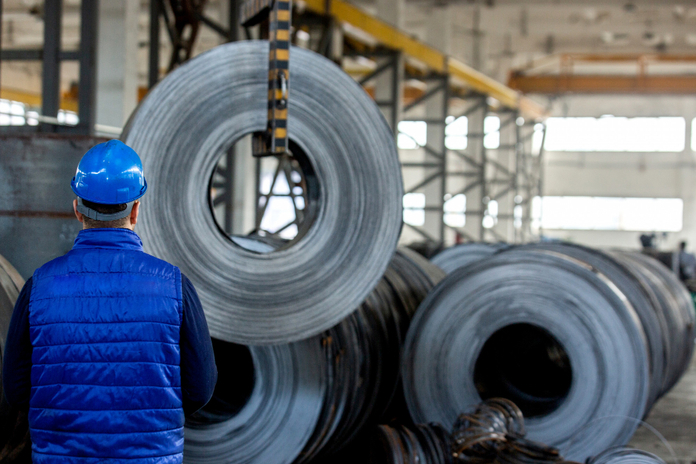The ongoing discussions surrounding the US Steel merger with Nippon Steel have raised concerns about job security for thousands of U.S. workers. On Wednesday, U.S. Steel (NYSE:X) warned that failure to complete the merger could lead to significant layoffs and the potential closure of several steel mills. The company’s leadership highlighted the serious implications this merger could have on U.S. union jobs, with many employees facing uncertainty about their future.
Political Concerns Over the US Steel Merger
The proposed US Steel merger has not only sparked concerns among employees and communities but has also become a hot topic in U.S. politics. Vice President Kamala Harris expressed her desire for U.S. Steel to remain “American-owned and operated,” signaling her opposition to the deal. Similarly, former President Donald Trump, a key figure in the Republican Party, has vowed to block the deal if elected in the upcoming 2024 presidential election. Given Pennsylvania’s crucial role in the election, both candidates have made several visits to the state, where U.S. Steel has a strong presence.
CEO’s Warning on Job Losses and Facility Closures
U.S. Steel CEO David Burritt issued a stark warning about the potential consequences if the US Steel merger with Nippon does not go through. According to Burritt, without the deal, the company would have to pivot away from its blast furnace facilities. This shift would jeopardize thousands of union jobs across various U.S. locations, leading to devastating consequences for the communities dependent on these steel mills.
In his statement, Burritt also suggested that the failure of the deal could lead to U.S. Steel relocating its headquarters out of Pittsburgh, Pennsylvania, a politically significant area. This potential move has drawn further attention from both political parties, with Pennsylvania being a battleground state for the 2024 election.
Nippon Steel’s Financial Commitments
Nippon Steel, on the other hand, has made significant commitments to U.S. operations if the merger is successful. The company has pledged to invest more than $2.7 billion in union-represented facilities, including the Mon Valley Works in Pennsylvania and the Gary Works in Indiana. These investments would support the future of manufacturing in those regions, benefiting both the workers and their local communities.
However, U.S. Steel made it clear that these financial commitments would not be made if the US Steel merger does not receive approval. Without these investments, the future of these facilities—and the jobs tied to them—remains uncertain.
Regulatory and Shareholder Approval
Nippon’s proposed $14.9 billion acquisition of U.S. Steel has already received regulatory approvals from international bodies, and U.S. Steel’s shareholders have also given their approval. The deal is now awaiting regulatory clearance from U.S. authorities before it can move forward. This final step in the process has become a point of contention, with political figures weighing in on the matter, potentially influencing the outcome.
Nippon Steel has sought to alleviate concerns about foreign ownership by promising that the core senior management team, as well as a majority of the board members at U.S. Steel, would remain U.S. citizens if the merger goes ahead. Despite these assurances, opposition remains strong, particularly from political leaders who are concerned about maintaining U.S. control over key industrial assets.
The Future of U.S. Steel and its Workforce
The US Steel merger debate has sparked fears among U.S. Steel’s workforce, who are left wondering what their future holds. While Nippon Steel’s investment promises offer a glimmer of hope, the uncertainty surrounding the merger’s approval has caused anxiety among employees. Thousands of union jobs hang in the balance, and the possibility of mill closures adds further pressure on workers, their families, and the communities that rely on these facilities.
With political opposition from both sides and the looming 2024 presidential election, the outcome of the US Steel merger is far from certain. As regulatory reviews continue, the fate of thousands of jobs, the future of U.S. steel manufacturing, and the economic stability of regions dependent on steel mills are all at stake.
Featured Image: Freepik



